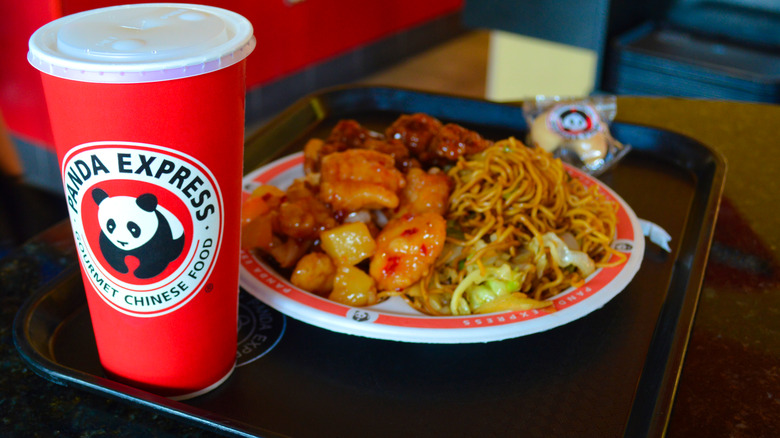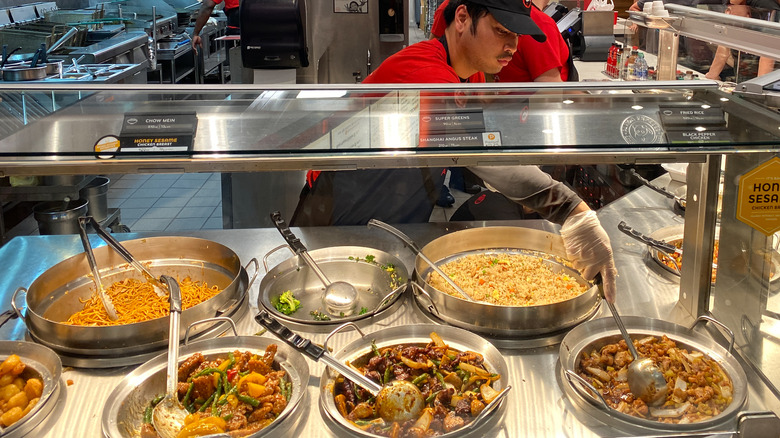Panda Express Gets A PAW Up In The Kitchen
Did you know Panda Express invented orange chicken? According to NPR, in 1987, Andy Kao, who was trained in classic French cooking, served as executive chef for the Chinese-American fast food chain and created the dish in Hawaii by adapting a popular bone-in chicken with a balance of sweet and savory flavors and oil extracted from orange peels. Thanks to Panda Express, orange chicken has since become a staple menu item in Asian restaurants across the United States and beyond. Panda Express did not stop innovating there, however.
New dishes are continually being tested in Panda Express's Innovation Kitchen in Pasadena, where chefs experiment before a live audience for immediate feedback on what works and what doesn't. From Chinese brussels sprouts and cauliflower to grilled steak, many of the restaurant's seasonal specials were first served up in the Innovation Kitchen (via Reader's Digest). Others become permanent fixtures on the Panda Express menu, such as the crispy almond chicken breast, which debuted in restaurants across the country in 2021. The white meat chicken is breaded with puffed-up rice and cooked in soy and garlic sauce before being sprinkled with slices of almond (via Guilty Eats). Panda Express has also managed to harness the power of technology to take its food to the next level, contributing to the big way robots are quietly taking over fast food.
Meet PAW the Panda Express Automatic Wok
With its circular bottom, the wok is a versatile kitchen staple that allows home cooks to apply direct heat to food, and then shuffle it to the sloping sides of the pan to forestall further cooking while maintaining high temperatures. According to the Encyclopedia Britannica, woks sold for home or restaurant use are available in iron, carbon steel, copper, or aluminum, ranging widely in size from 10 to 32 inches in diameter.
Woks have been used in Chinese cooking for 3,000 years, first created to withstand the heat of wood or charcoal-burning stoves and later adapted to be compatible with Western gas or electric stoves with the addition of a metal ring to prevent the pot from tipping over. Other modifications over the years have included racks and coverings to facilitate steaming, as well as electrical self-heating mechanisms, which allow for the pot to be used to cook food at the dinner table.
According to FoodBeast, Panda Express has taken advantage of the wok's next-generation technological advancements to improve quality control, productivity, and the retention of chefs and cooks. With the Panda Auto Wok (PAW), the restaurant chain expects to mix ingredients and menu items more evenly and expediently – reducing cooking time, along with incidents of repetitive motion-based stress injuries among kitchen staff. Robotic cooking devices are not going to replace chefs and cooks, however, which is good news for fans of the new dishes being churned out in Panda Express's innovation kitchen.

